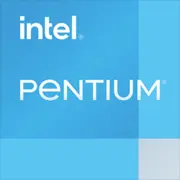Intel Pentium G3460T

Intel Pentium G3460T: Processore economico per compiti di base nel 2025
Aggiornato: aprile 2025
1. Caratteristiche principali: architettura Haswell e prestazioni modeste
Il processore Intel Pentium G3460T, lanciato nel 2014, è ancora presente nelle configurazioni economiche grazie al suo basso consumo energetico e al prezzo accessibile. Esaminiamo i suoi parametri chiave:
- Architettura: Haswell (4a generazione Intel Core).
- Processo tecnologico: 22 nm.
- Core/Thread: 2 core, 2 thread.
- Frequenza di base: 3.0 GHz (assenza di turbo boost).
- TDP: 35 W.
- Grafica integrata: Intel HD Graphics per la 4a generazione (frequenza base 200 MHz, dinamica fino a 1100 MHz).
- Cache: 3 MB L3.
Caratteristiche chiave:
- Basso calore emesso — adatto per PC compatti.
- Grafica integrata per compiti di base.
- Supporto delle istruzioni SSE4.2 e AVX2 (utile per alcune applicazioni).
Prestazioni:
Nei test del 2025, il G3460T mostra risultati modesti:
- Cinebench R23: ~700 punti (monotred) — livello Intel Celeron G5900.
- YouTube 1080p: Carico CPU fino al 40–50% (senza decodifica hardware VP9/AV1).
- Compiti d'ufficio: Lavoro su documenti, browser con 5–10 schede — senza lag, ma con ritardi all'avvio di applicazioni web pesanti.
2. Schede madri compatibili: Socket LGA 1150 e chipset
Il G3460T utilizza il socket LGA 1150 obsoleto, il che limita le opzioni delle schede madri. Opzioni attuali nel 2025:
- Chipset: H81, B85, H87, Z87.
- Modelli consigliati:
- ASRock H81M-HDS (prezzo: $35–$45) — minimo di porte, ma funzionamento stabile.
- Gigabyte GA-B85M-D3H ($50–$60) — 4 slot RAM, supporto SATA 6 Gbps.
Caratteristiche da considerare:
- Evitare schede con condensatori danneggiati (problema comune nei dispositivi usati).
- Aggiornare il BIOS prima di installare il processore (alcune schede richiedono patch).
- PCIe 3.0 x16 disponibile, ma non sufficiente per le schede grafiche moderne (può andare bene GTX 1650 o equivalenti).
3. Memoria supportata: DDR3L e limitazioni
Il Pentium G3460T lavora solo con memoria DDR3/DDR3L:
- Capacità massima: 32 GB (teoricamente), ma in pratica 16 GB (2x8 GB).
- Frequenze: Fino a 1600 MHz (in overclock — 1866 MHz, ma instabile).
Suggerimenti:
- Utilizzare la modalità dual channel (2x4 GB o 2x8 GB) per migliorare le prestazioni grafiche.
- DDR3L (1.35 V) è preferibile per il minor consumo energetico.
4. Alimentatori: requisiti minimi
Con un TDP di 35 W, il processore non richiede un alimentatore potente:
- Senza scheda video dedicata: Un'alimentatore da 300 W è sufficiente (ad esempio, be quiet! SFX Power 3, $40).
- Con scheda video: Per GTX 1650 — 450 W (Corsair CX450, $55).
Importante:
- Alimentatori economici senza certificazione 80 Plus possono causare instabilità.
- Nelle configurazioni compatte utilizzare il formato Flex ATX o TFX.
5. Pro e contro del Pentium G3460T
Pro:
- Prezzo: Processori nuovi nei resti — $45–$60.
- Efficienza energetica: Ideale per NAS o centro multimediale.
- Funzionamento silenzioso: Raffreddamento passivo possibile.
Contro:
- 2 core: Multitasking limitato.
- Nessun supporto per DDR4/DDR5: Prestazioni della memoria inferiori del 20–30% rispetto agli standard moderni.
- Grafica obsoleta: Non riesce a gestire il 4K HDR.
6. Scenari d'uso: A chi è utile nel 2025?
- PC da ufficio: Word, Excel, Zoom — adeguato, ma con limitazione su compiti in background.
- Home theater: Riproduzione Full HD tramite Kodi o Plex (il 4K richiede un lettore esterno con decodifica hardware).
- Server: NAS leggero basato su OpenMediaVault.
Esempio pratico:
Un utente ha assemblato un centro multimediale su G3460T con SSD da 256 GB e 8 GB di RAM. Lo streaming funziona in modo stabile, ma si osservano inceppamenti durante l'avvio simultaneo di torrent e video.
7. Confronto con i concorrenti
AMD Athlon 3000G (prezzo: $65–$75):
- 2 core/4 thread, grafica Vega 3.
- Supporto DDR4 (fino a 2666 MHz).
- Meglio nelle attività multithread (+30% in Cinebench R23).
Intel Celeron G6900 (prezzo: $75–$85):
- 2 core/2 thread, ma architettura Alder Lake (10 nm).
- Supporto DDR4-3200, grafica UHD 710.
- 50% più veloce nei test single-thread.
Conclusione: G3460T vince solo sul prezzo, ma perde in prestazioni e funzionalità.
8. Suggerimenti pratici per l'assemblaggio
- SSD obbligatorio: Kingston A400 240 GB ($25) ridurrà i tempi di avvio.
- Raffreddamento: Il dissipatore di stock è sufficiente, ma per silenziosità scegli Arctic Alpine 11 ($15).
- Scheda madre: Non pagare di più per Z87 — l'overclock non è possibile.
- Upgrade: Considera di sostituire con un usato Core i5-4590T ($30–$40) per 4 core.
9. Conclusione: A chi è adatto il Pentium G3460T?
Questo processore è da scegliere se:
- Il budget è strettamente limitato ($100–$150 per l'intera costruzione).
- Serve un PC per compiti semplici (ufficio, navigazione, lettore multimediale).
- È importante basso consumo (HTPC, funzionamento 24/7).
Alternativa: Se il budget consente +$20–$30, AMD Athlon 3000G o Intel Celeron G6900 offriranno più opportunità per futuri aggiornamenti.
In sintesi: Il Pentium G3460T nel 2025 è una soluzione di nicchia per gli appassionati che assemblano sistemi minimalisti. Il suo tempo è passato, ma se usato saggiamente, può ancora fare molto.
Di base
Specifiche della CPU
Specifiche della memoria
Specifiche della GPU
Varie
Condividi sui social media
Oppure linkaci
<a href="https://cputronic.com/it/cpu/intel-pentium-g3460t" target="_blank">Intel Pentium G3460T</a>